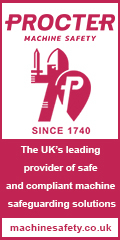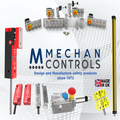
Posted to News on 27th Jul 2008, 20:15
Tolerance ring applications for automotive motors
Chris Needes, Automotive Product Manager at Saint-Gobain Performance Plastics Rencol, outlines some of the ways tolerance rings have benefited electric motor applications.

Electric motors are found in almost anything that has an electrical movement or solenoid function; familiar examples include refrigerators, washing machines and power tools. In the automotive world, car manufacturers are increasingly employing electric motors for powered windows, seat adjusters and mirrors; they are also now being used in electric power steering (EPS) systems and active suspension and brake systems.
Indeed, with the proliferation of electric motors in these wide-ranging applications, OEMs are now keeping a close eye on the motor's reliability, size, weight and noise generation, as well as the overall system costs. This is pushing the motor manufacturers to re-engineer their designs - for example, there have already been novel advances in motor control. Today, however, OEMs are looking to new advances in electric motor design as well as the system itself. Here the innovative use of tolerances rings is already proving invaluable for an impressively wide range of applications.
The idea behind tolerance rings is very straightforward - they are simply radially sprung steel rings that are press-fitted between two mating components. They are, in other words, a special form of frictional fastener. Typically manufactured from high-quality spring steel, stainless steel or specialist spring materials, tolerance rings are invariably custom designed to suit particular applications. All types, however, have one essential characteristic in common: a series of protrusions or 'waves' around their circumference. Each of these waves acts as an individual radial spring, which, when the tolerance ring is in situ, transfers forces between the mating components. This arrangement means that tolerance rings are capable of handling direct torque transfer, torque slip, axial retention, controlled collapse, radial loading and differences in thermal expansion between the mating components.
Tolerance rings have a major role to play in the design and manufacture of safe, dependable electric motors. They have already been successfully designed into appliance and automotive applications, both within the motor itself or as part of the overall assembly; typical mounting examples include stator, sensor, gear and bearings.
Stator mounts
Techniques for mounting the stator rigidly in the can of the electric motor are numerous. One seemingly straightforward approach is to use a heat-to-press method. While it certainly seems an inexpensive mounting method, the forces needed to fit the component are extremely high - in the region of a couple of metric tonnes - and may result in the laminated stator falling apart. Should this happen, the cost of the replacement stator or the electric motor itself may well be relatively small, but the cost of fitting it is likely to be considerable.
An alternative stator mounting method that is less likely to cause mechanical damage is the use of adhesives; unfortunately, gluing brings its own problems. The first is that is can be very difficult to position the stator concentrically when using adhesives. The second is that once the adhesive has cured, reworking the assembly is practically impossible. There is also the overall assembly time to consider - curing can take several hours - and the potential for outgassing of particulate to the electrics.
Tolerance rings can be used successfully to overcome the problems associated with the traditional heat-to-press and gluing methods. The sprung nature of the coupling between the components greatly reduces or even eliminates the adverse effects of minor radial misalignment and compensates for differential thermal expansion.
Sensor Mounts
Sensors used in electric motors must have exact positioning while at the same time be able to withstand severe shock and vibration. To complicate matters further, they often incorporate magnets manufactured from powdered metal that are brittle and therefore difficult to fix in place. Again, the traditional mounting methods - press-to-fit and gluing - often prove unsatisfactory.
Using tolerance rings, assembly is quick and simple; by gently closing-up the tolerance ring ends and pushing it into the plastic magnet housing until it is located squarely within the groove. Once positioned, the ring is released and the spring properties retain the ring within the housing. Then the shaft is simply pressed into the tolerance ring to the desired vertical location. Accurate alignment of the magnet poles can be achieved easily by simply rotating the holder.
Since the fitting force is low and can be accurately determined by the design of the ring, the assembly can be press-fitted without any risk of damage to the brittle magnet. Also, because of the resilient nature of the tolerance ring, this arrangement provides the sensor with a useful degree of protection against vibration and shock. In addition, the ring gives consistent performance over a wide range of temperatures.
Bearing mount
Mounting methods for bearings are many and diverse, with a simple interference fit still used in many applications. Nevertheless, this mounting method requires strict adherence to tight tolerances and is intolerant to misalignment, thermal expansion and prolonged high levels of vibration. As such, many other mounting methods have been developed, including the use of O-rings, circlips, screws and plastic cups. Unfortunately, these all add to assembly cost and complexity without providing a comprehensive solution to the various installation problems.
In bearing mount applications, the tolerance ring acts as a radial spring fastener between the bearing and the housing. This allows the tolerance on the housing to be greatly relaxed, so the OEM can use 'as moulded' parts. In a similar way, the tolerance ring automatically provides compensation for differential thermal expansion between the housing and the bearing over a wide temperature range. Additionally, the sprung nature of the coupling between the components greatly reduces or even eliminates the adverse effects of minor radial or axial misalignment. Also, this mounting method allows the bearing to be removed from the housing for rework relatively simply and eliminates the risk of the bearing 'freezing'.
Operational benefits
In service, the key benefit of tolerance rings is undoubtedly their reliability, but they can also offer other useful advantages. They are good, for example, at damping vibration and helping with noise reduction. This can be particularly important in equipment operating at high rotational speeds, or in high-quality products were near-silent operation is a prerequisite. Special types are also available for particularly demanding applications, such as the tabbed rings that guard against the tolerance ring 'walking' out of its housing when the bearing is subjected to high levels of vibration.
Gear mounts
Engine backfiring during starting can cause serious starter motor damage, particularly in large diesel-driven applications. Typical examples of where this application would be seen include trucks, pumping stations and generator plants.
Internally, electric starter motors have a gear drive with a one-way clutch. When a backfire occurs, the engine momentarily stops or even reverses. If this happens while the starter is engaged, a severe shock load is imposed on the gears and the clutch, which can cause damage. It is even possible for the commutator and the motor windings to slip on the shaft, resulting in broken wires. In any of these situations, the starter motor will eventually be damaged to the point where it has to be replaced or rebuilt.
By fitting a tolerance ring between the gear and the internal clutch cam this problem is easily solved. With this arrangement, when the engine backfires the starter continues to drive but the gear slips, preventing damage. In most cases, the tolerance ring can be added without the need to redesign or otherwise modify the starter assembly. Tolerance rings are also being used for motor mounting, where they help to absorb shock transmitted from the engine.
Conclusion
In almost every application considered above, the problems so often associated with devising an effective mounting method - whether it is the stator, sensor, bearing or gear - can be completely eliminated by using tolerance rings. They are inexpensive, easy to use and their benefits are numerous, so why not evaluate them for your next project?
For further information, please call Saint-Gobain Performance Plastics Rencol on +44 (0)117 938 1700 or visit www.rencol.co.uk.
Want the latest machine building news straight to your inbox? Become a MachineBuilding member for free today >>
Saint-Gobain Performance Plastics Rencol Ltd
16 Concorde Road
Patchway
BS34 5TB
UNITED KINGDOM
+44 (0)117 938 1700

















